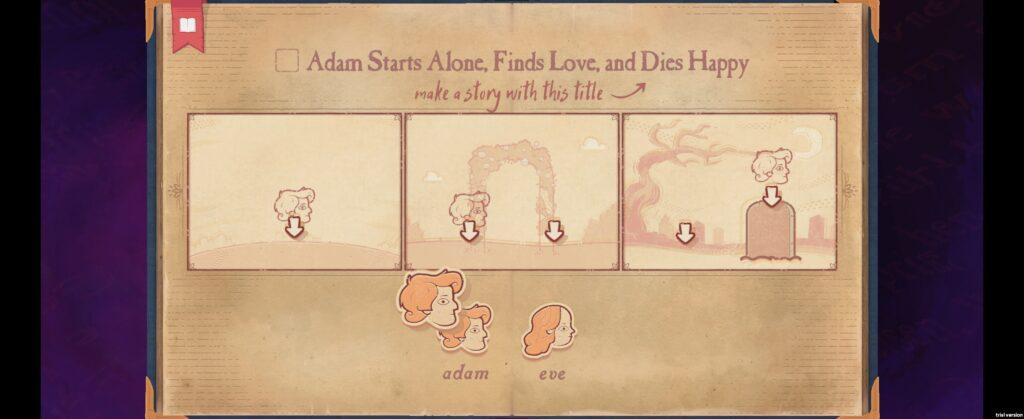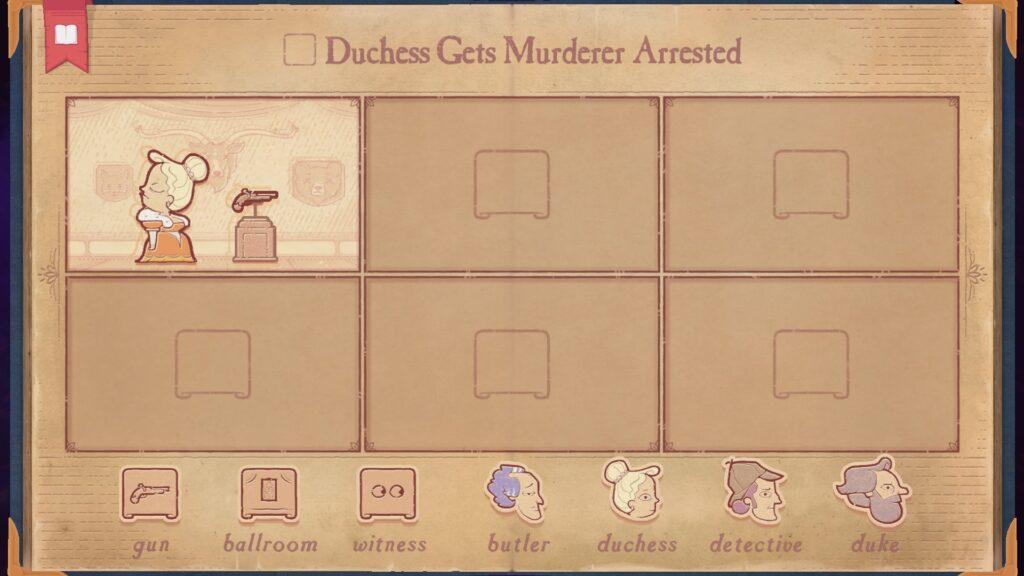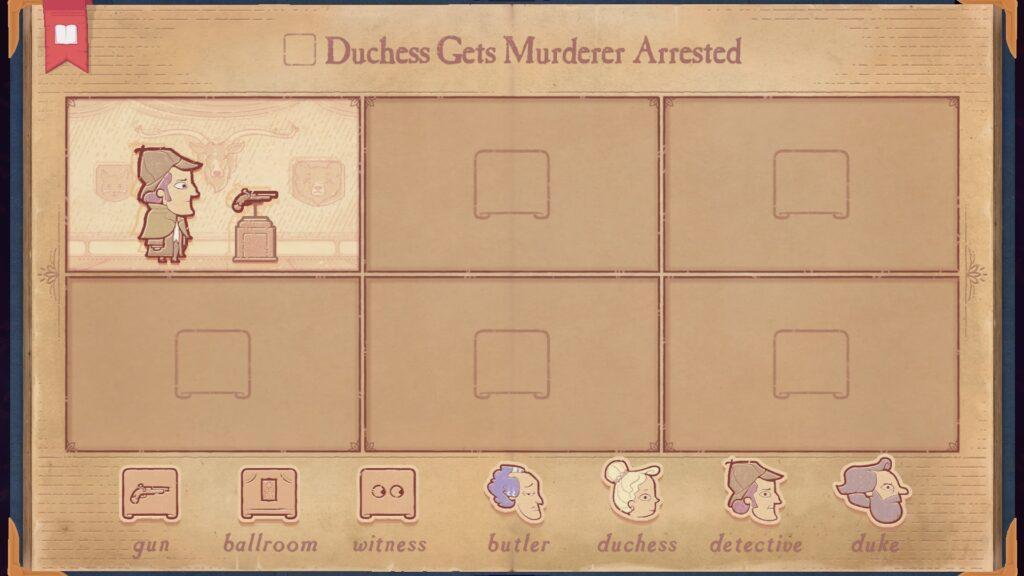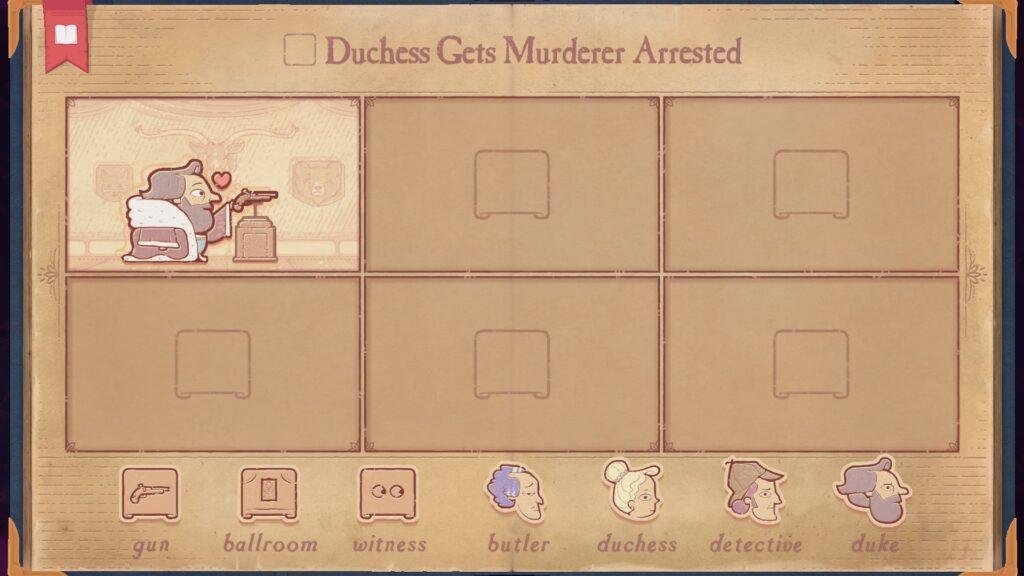Storyteller is a classic puzzle game created by Daniel Bermengui in which players are given a story and build it up by solving the puzzle. The game is available on PC, Nintendo Switch, and now on mobile through Netflix. Game Developers Conference 2024 says the intended audience for this game is “anyone interested in original game design”, and I would agree. The game’s mechanics are simple and easy to follow, they translate well from one medium to another, I tried it out on both my laptop and phone. The game is definitely not meant for all ages because it can become quite difficult and it does include death and violence, but it seems appropriate for tweens, teens, and adults. I found the game similar to NYT puzzles in the vast audience it can appeal to.
Through straightforward controls and built-in character “hints”, Storyteller reserves players’ working memory for the puzzle solving and guides the player through constant interaction loops.
On mobile, Storyteller includes drag and drop controls that are incredibly intuitive. The game does not include a traditional tutorial, nor does it include traditional hints, but it works around those in a very elegant way. There is one level that I would call a tutorial, with scaled down difficulty and added hints. However, this only serves to explain the controls to the player, not to give the player information needed to solve puzzles. The omission of a standard tutorial means the interaction loop of the player’s immersion into the puzzles’ narrative starts immediately.

Level 1: What I would call a tutorial level.
After the controls are introduced, all traditional hints stop. I think this is the key to making the puzzles drive the narrative of the game. The interaction loop now only includes visual feedback when the player tries a certain move, it will not hint to the player in any obvious way. Here is an example of what I mean by this. The following level includes 4 characters. The prompt mentions an elusive murderer. There is no character named murderer. Yes, there are certain stereotypes that can provide context, but this game has already went against stereotypes in multiple ways by the time a players gets to this level. There is no arrow or straightforward hint saying “the butler is the murderer”. However, through interacting with the scene, the player gains the following visual feedback:




Screenshots of a level showing 4 different characters interacting with a gun
The omission of traditional hints and the reliance on this in-game, in-puzzle visual feedback for driving forward the interaction loop is what keeps the player engaged in gameplay. Hints are very important, but they often feel like cheating, or have other unintended consequences. In games like Candy Crush where there is no opting out of hints, we can observe the effect of undermining a player’s autonomy. In other puzzle games that include hints that can be purchased in some way (money, ads, diamonds, tokens), the use of a hint will often lead to the breaking of the magic circle in some form, and a reliance on hints would mean too steep a difficulty curve.
In Storyteller, the omission of hints means that other forms of visual feedback need to be present. In the example above, the way that each character interacts with a gun does serve as a visual hint in some sense, but it does not take the player out of the immersion of the game. These built in “hints” are as much part of the puzzle as the characters themselves are. After completing this particular level, the player completes an iteration of the interaction loop, learning that the butler will happily pick up the gun. The constant learning through interaction loops and the reuse of characters makes it so that the progression in difficulty of the puzzles feels both natural and satisfying. The focus on the autonomy and competence of the player makes immersion into the game much easier and engages the need for mastery in a unique way. (I do want to acknowledge that this is only possible because the game does not have microtransactions, which would probably be a topic for a different version of this analysis.)




